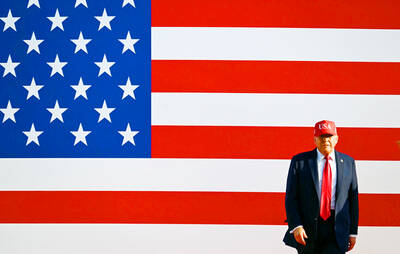The King is dead, but the burger lives on.
Burger King Corp on Friday said it is retiring “The King” mascot, a man with an oversized plastic head and creepy smile, who in recent years has been shown in ads peeping into people’s windows and popping up next to them in bed.
The move is an effort by the struggling fast food chain to boost slumping sales by focusing its marketing on the freshness of its food rather than the funny-factor of its ads. It was scheduled to roll out a new campaign yesterday without The King to tout its fresh ingredients and new products like its California Whopper, which has fresh guacamole.
“We won’t be seeing The King for a while,” Burger King spokesman B.J. Monzon said on Friday.
The new focus is a departure for Burger King, which long has targeted its ads at young male teens who like to chomp its chargrilled burgers and gulp its milkshakes. The economic downturn has battered its core customer — young males have been particularly hard hit by unemployment — and Burger King is looking to boost declining sales by appealing to the mothers, families and others that rivals like McDonald’s Corp have successfully courted.
“I think it’s great they are doing something as opposed to just withering away,” said Joel Cohen, a restaurant marketing consultant. “They are taking an approach that is not that much different from what McDonald’s is doing and growing up.”
The new focus comes as Burger King attempts to regain its edge. While competitors have grown by updating their offerings, Burger King largely stuck to its menu of burgers and fries.
For example, McDonald’s has worked to portray itself as a healthier, hip place to eat, offering wireless access in restaurants, updating decor and introducing smoothies, oatmeal and yogurt parfaits. Subway has grown quickly by emphasizing fresh, quick and affordable food. The company has also faced competition from other burger chains, like Sonic and Five Guys Burgers and Fries.
As a result, Burger King, which was once in a neck-and-neck competition with McDonald’s, has seen sales slump. Last year, the top three US restaurant chains — McDonald’s, Subway and Starbucks — all reported strong revenue gains, while fourth-placed Burger King’s revenue fell 2.5 percent.
In the second quarter of this year, the company’s net income fell more than 13 percent to US$42.8 million and revenue fell 4 percent to US$596.2 million. During the same quarter, McDonald’s profit rose 15 percent to US$1.4 billion and its revenue rose 16 percent to US$6.9 billion.
“Whatever they are doing isn’t working, so it’s time to do something different,” said Bob Goldin, analyst at Chicago-based food consultancy Technomic. “There is a sense of urgency to get back on their feet.”
That Burger King is looking to its mascot for change is not surprising. Other restaurant chains have recently begun to use their longtime mascots less — or ditched them completely — to freshen up the brand.
McDonald’s, which has faced tough scrutiny of its marketing to kids, has moved away from an emphasis on Ronald McDonald, its clown mascot festooned in red wig and shoes. The Wendy’s chain no longer plays up its Wendy character, which has red hair and matching freckles, in its marketing.
A chain’s mascot should give a brand a better sense of identity by connecting it better with consumers while entertaining them. Cohen said.
The King did not do that, whereas others, such as Jack In the Box’s ball-headed “founder” and Chik-Fil-a’s black and white cows that encourage people to “Eat Mor Chikin,” do, he added.
“When you think of it, the difference between the two, The King was creepy,” Cohen said. “There is a cool factor to the cow and there is a cool factor to Jack. They both come off with a wry sense of humor which is appealing.”
Burger King has used The King mascot since 1955 when his image appeared on the sign at its first store in Miami. He has taken various forms since then, including going animated in ads and running with a crew of other food-themed royalty like “Sir Shakes a Lot.” This is not the first time The King has gone on hiatus. The company had him step down in 1989 to let a “Kids Club Gang” have a try. He returned in 2004 when the company hired a new advertising agency, Crispin Porter and Bogusky, which is known for its edgy work, to breathe new life into the brand.
Since then, The King had become a more central part — and decidedly creepy — part of ads in more recent years. The mascot showed up in a variety of odd scenarios in ads, including lying next to a man in bed, but as sales fell, the company looked in a new direction.
The decision to get rid of The King came as the company began looking at the business as a whole after it was acquired by investment firm 3G Capital last year, Burger King spokesman Miguel Piedra said.
As part of that, the company switched advertising agencies last month to mcgarrybowen, which referred calls seeking comment to Burger King officials. Piedra said the company and agency decided to make its ads food-centric after finding that the reason people love its brand is because of the quality of its food.
“This is just the beginning of our journey — a reintroduction of the burger king brand to consumers,” Piedra said.
Burger King said their mascot may not be banished from the kingdom forever. He may come back at in the future in a different form. In the meantime, the company will still carry paper crowns in stores.

When Lika Megreladze was a child, life in her native western Georgian region of Guria revolved around tea. Her mother worked for decades as a scientist at the Soviet Union’s Institute of Tea and Subtropical Crops in the village of Anaseuli, Georgia, perfecting cultivation methods for a Georgian tea industry that supplied the bulk of the vast communist state’s brews. “When I was a child, this was only my mum’s workplace. Only later I realized that it was something big,” she said. Now, the institute lies abandoned. Yellowed papers are strewn around its decaying corridors, and a statue of Soviet founder Vladimir Lenin

UNIFYING OPPOSITION: Numerous companies have registered complaints over the potential levies, bringing together rival automakers in voicing their reservations US President Donald Trump is readying plans for industry-specific tariffs to kick in alongside his country-by-country duties in two weeks, ramping up his push to reshape the US’ standing in the global trading system by penalizing purchases from abroad. Administration officials could release details of Trump’s planned 50 percent duty on copper in the days before they are set to take effect on Friday next week, a person familiar with the matter said. That is the same date Trump’s “reciprocal” levies on products from more than 100 nations are slated to begin. Trump on Tuesday said that he is likely to impose tariffs

HELPING HAND: Approving the sale of H20s could give China the edge it needs to capture market share and become the global standard, a US representative said The US President Donald Trump administration’s decision allowing Nvidia Corp to resume shipments of its H20 artificial intelligence (AI) chips to China risks bolstering Beijing’s military capabilities and expanding its capacity to compete with the US, the head of the US House Select Committee on Strategic Competition Between the United States and the Chinese Communist Party said. “The H20, which is a cost-effective and powerful AI inference chip, far surpasses China’s indigenous capability and would therefore provide a substantial increase to China’s AI development,” committee chairman John Moolenaar, a Michigan Republican, said on Friday in a letter to US Secretary of

Taiwan Semiconductor Manufacturing Co’s (TSMC, 台積電) market value closed above US$1 trillion for the first time in Taipei last week, with a raised sales forecast driven by robust artificial intelligence (AI) demand. TSMC saw its Taiwanese shares climb to a record high on Friday, a near 50 percent rise from an April low. That has made it the first Asian stock worth more than US$1 trillion, since PetroChina Co (中國石油天然氣) briefly reached the milestone in 2007. As investors turned calm after their aggressive buying on Friday, amid optimism over the chipmaker’s business outlook, TSMC lost 0.43 percent to close at NT$1,150